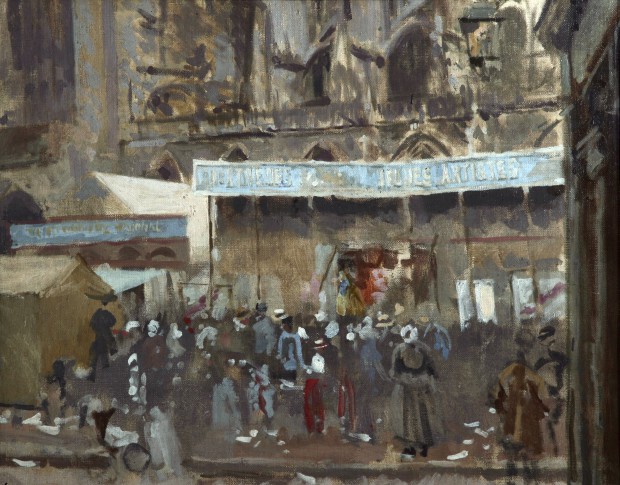Walter Sickert was fluid in both his art and his personality: changeable in style and technique, mutable in appearance — now dressing as a French fisherman, now as a dandy, next shaving his head — and even in name (for a while he styled himself Richard, not Walter, Sickert). All of which makes his long artistic association with the seaside resort of Dieppe apt in more ways than one. This is the theme of an excellent exhibition at Pallant House Gallery, Chichester. A century ago Dieppe was a very Sickertian place.
In ancestry and artistic attitudes, Sickert was an exemplary cosmopolitan. His father was Danish-German; his mother the illegitimate daughter of a wealthy astronomer from Leeds and an Irish dancer (it was from the last, one suspects, that he inherited his handsome looks, and perhaps the impish strain in his character).

Thanks to the London, Brighton and South Coast Railway and the steamboat from Newhaven, the French port was one of the closest bits of abroad to the West End. In the late 19th century, the journey took 11 hours. On one occasion, Sickert’s friends Aubrey Beardsley, Charles Conder and the writer Ernest Dowson set off impromptu on the boat train after an evening’s drinking. When they arrived the next day, these luggage-less decadents would have found a Norman town with ancient churches and picturesque streets, but also grand hotels, nightspots and a casino.
Dieppe was crumbly and up-to-date, seedy and smart all at the same time — a touch of Brighton and a smidgeon of Monte Carlo, with a Norman accent. Over nearly 40 years, from the mid-1880s to the early 1920s, Sickert (1860–1942) painted all these different aspects of the place.








Comments
Join the debate for just £1 a month
Be part of the conversation with other Spectator readers by getting your first three months for £3.
UNLOCK ACCESS Just £1 a monthAlready a subscriber? Log in